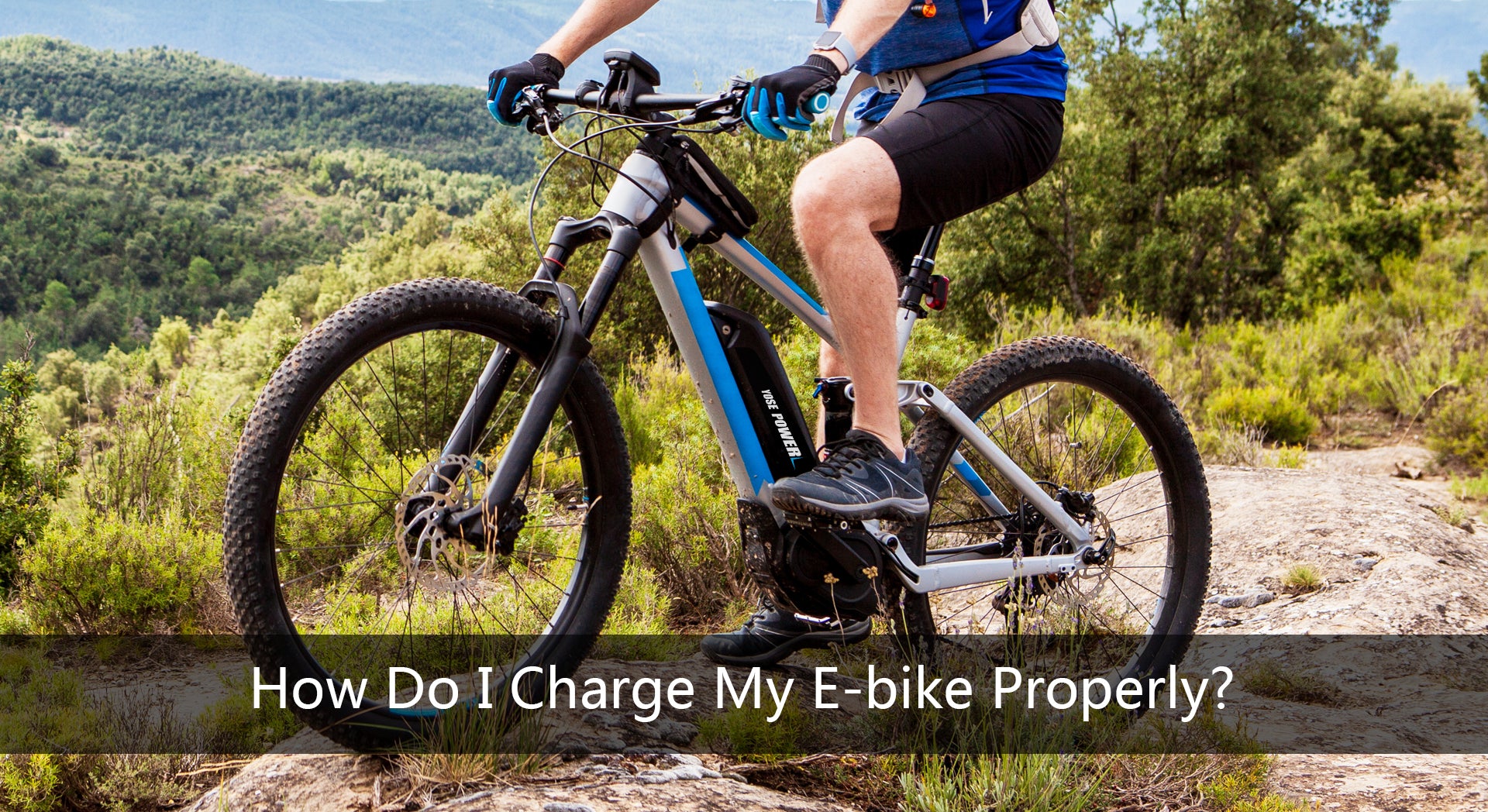
Charging Method of E-bike
The most common and universal way to charge an e-bike is with a charger. Although you want your e-bike to extend its battery life, all e-bikes need to use a typical outlet to charge the battery. The outlet can be installed in an RV using propane; a solar charger for camping or a solar charger on the roof of an RV; a conventional outlet in a home or business, etc. It requires only one outlet powered by current.
In addition to the ordinary charging method, there are some special charging methods. The first is solar power, and there are several portable photovoltaic panels that can even provide 220V power. However, it is important to know that the wattage provided by solar panels will be reduced by at least 90% on cloudy days. What is worth noting with this type of charging is that first you need to check the voltage and amperage of the solar panel to make sure it will match your e-bike. Second, the compatibility of your e-bike battery charger connection with the solar panel connection.
The second type is power generation. Some e-bike merchants have created functions that allow charging while riding. However, this will make it harder to pedal and will also increase the cost of the e-bike. If you're not sure how long your e-bike battery will last on a long trip, what I suggest is to prepare a backup battery in advance for a better experience. This will help you eliminate the worry of running out of battery power while riding.
Precautions before Charging
-
Confirm that the Charger Matches the E-bike
To charge an e-bike battery, you need a charger that exactly matches the battery specifications. This is because different battery types require different chargers, depending on voltage and amperage. Many e-bike batteries are lithium-ion, usually at 36 V or 48 V, and draw from 2 A to 7 A. Before charging your e-bike's battery, be sure to read your e-bike's manual for any safety precautions that apply to your e-bike. If another member of your household has an e-bike with a similar-looking battery charger, clearly mark on each e-bike which one it is to be connected to. It is possible to damage a battery easily if it is plugged into the wrong charger. - Check the Battery Level to Prevent Overcharging and Over-discharging
Most e-bikes will have indicator lights to tell you if your bike needs to be charged, or if your bike is now fully charged. Depending on the brand of your bike, the indicator will operate differently. Yose Power's e-bike battery indicator consists of three green lights and one red light. When the battery is 100% fully charged, all four lights will light up at the same time. For every 25% reduction in charge, one green light will gradually fade out from right to left. Until finally only 25% of the battery is left, you will find only one red light is on. You can control the battery situation according to the light and fully anticipate the charging time. For most e-bikes, the indicator light on the battery will flash in some way while charging. When the red light comes on, you will need to remove the battery from the bike carrier. However, make sure the battery is off before connecting it to the outlet. When it is fully charged, the light will turn green and you can reconnect it to the bike's battery carrier.
Different brands of e-bikes require between 2-7 hours of charging time. Depending on this time, what you need to do is to disconnect the charger from the outlet in time to avoid overcharging. Overcharging can have a negative impact on the battery because when the charger is charged to more than full capacity, the battery may begin to reduce its charge capacity to continue charging. This can create up to 5% discharge cycles, requiring the charger to recharge the battery repeatedly. This will be detrimental to battery life in the long-term because the battery will never be fully charged again and it may begin to end its charge cycle when it reaches about 95%. This performance will shorten the life of the battery and reduce efficiency when riding the bike. Over-discharging should also be avoided, and it is usually not recommended to completely drain your e-bike battery before each charge. Always try to charge your bike battery when you have 20-60% of charge left to avoid a completely discharged battery. If your bike brand is Yose Power, then it is recommended that you consider charging when only one red light is left on. In most cases, you do not need to charge the battery after every ride. Most e-bikes are equipped with lithium batteries that perform best when used regularly. Now keep in mind that when you ride your bike regularly, this means that your battery will need to be charged regularly as well.
- Check the Safety of the Charging Environment to Avoid Accidents Such as Fire and Electrocution
Choose a suitable environment when charging your e-bike, away from high temperature, high heat, humidity and confined environment. Do not charge your e-bike at home, as this can be dangerous in the event of an explosion or fire. It is better to charge your e-bike in a garage or public charging area. If the facilities in the public charging area are a bit old, take good protective measures when it rains and don't let water into the charger and socket.
Charging Procedure
- Turn off the Battery Switch and Remove the Battery from the E-bike
First you need to locate the power button on the battery on your e-bike and turn it off to deactivate the battery for safe removal. If your e-bike uses a key to unlock the battery, insert the key and turn it to unlock it. If your bike uses clips or tabs to secure the battery, loosen them to disconnect the battery. Remove the battery by sliding it off the bike.
- Plug the Matching Charger into an Outlet
Pick up the e-bike's matching charger and plug the power cord into the slot on the charger. Then, plug the power cord into a nearby outlet. Check again that the charger matches the battery model while operating.
- Insert the Charger into the Charging Port on the Battery
Place the battery on a flat surface, such as your table or on the floor, and find the charging port on the battery, which is usually located on the top or side of the battery. Take the charger and plug it directly into the charging port until the light on the charger illuminates, indicating that it is charging the battery.
Post-charge Handling
- Disconnect the Charger from the E-bike Battery
Disconnect the fully charged battery from the charger in a timely manner. On the one hand, it can prolong the life of the battery. On the other hand, you can avoid accidents. Install the battery correctly to the bike rack and put the charger in a dry and cool place for the next use.
- Check the Battery Condition during Charging
When charging your e-bike battery, try not to stay too far away from the charging place. Do not connect the e-bike battery to the charger for too long. Avoid overcharging the battery at all times, as this will reduce the efficiency of the battery more quickly. You can use a reminder or timer on your mobile device to remind you to disconnect the battery from the outlet.
- Avoid Storing Batteries for a Long Time
It is best to avoid storing dormant bicycle batteries altogether. The reason is that e-bike batteries perform at their best when they are used regularly and recharged regularly. However, if you must travel for a period of time, make sure you do not store your bike battery when it is running out of juice. The best range for storing your battery is 30-70% of its charge. If you choose to store a dead battery, then not only will it become increasingly difficult to recharge the battery, but it won't last as long as it used to.
The correct charging method can extend the life of your e-bike. If you still want to learn more about extending the life of your e-bike battery, read this article.Come and buy an E-bike just for you! Buy from here and use Coupon Code: YOSELILY to get €10 off!


Share:
Time to DIY Your Regular Bike
Is It Difficult to Maintain an E-bike?